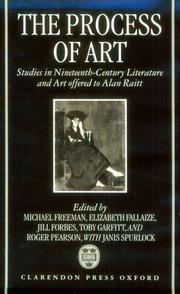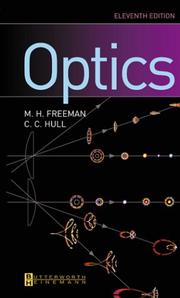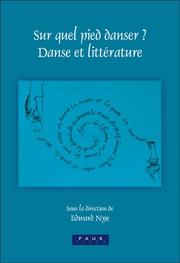| Listing 1 - 7 of 7 |
Sort by
|
Book
ISBN: 1438439466 1461906377 9781461906377 9781438439457 1438439458 9781438439464 9781438439464 Year: 2011 Publisher: Albany Excelsior Editions/State University of New York Press
Abstract | Keywords | Export | Availability | Bookmark
 Loading...
Loading...Choose an application
- Reference Manager
- EndNote
- RefWorks (Direct export to RefWorks)
This candid account of the author's two-week canoe trip down the Hudson River offers an introspective and humorous look at both the river and Recession-Era America. New to fatherhood and fresh from ten years in an Alaskan village, Mike Freeman sets out to relearn his country, and realizes it's in a far greater midlife crisis than he could ever be. With an eye on the Hudson's past, he addresses America's present anxieties—from race, gender, and marriage to energy, labor, and warfare—with empathy and honesty, acknowledging the difficulties surrounding each issue without succumbing to pessimism or ideology.From the river's headwaters in the Adirondacks, Freeman follows the Hudson south through America's first industrial ghost towns, where ruin begs for rebirth. Next is the Hudson Valley and the river's 153-mile estuary, with its once-teeming fisheries. Here, agriculture is redefining itself, while at West Point, officer candidates train for America's murky modern wars. The Hudson Highlands, too, are prominent, the place where Americans first wed God to nature, and where the mountains remain a potent place to mull that bond. From there it's on to Manhattan, with its skyline that symbolizes the world's financial might as well as its startling fragility.As controversial as it is comforting, Freeman's narrative makes us think in hard ways about America as the country itself drifts toward an uncertain future. But throughout, of course, is the magnificent Hudson, whose resilient beauty speaks well both to nature's toughness and America's greatest strength—the ability to redirect and change course when necessary.
Canoes and canoeing --- Freeman, Mike, --- Travel --- Hudson River (N.Y. and N.J.) --- Hudson River Valley (N.Y. and N.J.) --- Description and travel.

ISBN: 0198159536 9780198159537 Year: 1998 Publisher: Oxford: Clarendon,
Abstract | Keywords | Export | Availability | Bookmark
 Loading...
Loading...Choose an application
- Reference Manager
- EndNote
- RefWorks (Direct export to RefWorks)
Arts [French ] --- Arts français --- Kunsten [Franse ] --- Arts, French --- Arts [Modern ] --- 19th century --- France --- Arts, French - 19th century.

ISBN: 0750642483 9780750642484 9780702038181 0702038180 Year: 2004 Publisher: [Place of publication not identified] Butterworth Heinemann Imprint
Abstract | Keywords | Export | Availability | Bookmark
 Loading...
Loading...Choose an application
- Reference Manager
- EndNote
- RefWorks (Direct export to RefWorks)
Medicine --- Health & Biological Sciences --- Ophthalmology & Optometry

ISBN: 9780702038181 0702038180 0750642483 9780750642484 Year: 2004 Publisher: [Place of publication not identified] Butterworth Heinemann Imprint
Abstract | Keywords | Export | Availability | Bookmark
 Loading...
Loading...Choose an application
- Reference Manager
- EndNote
- RefWorks (Direct export to RefWorks)
Book
ISBN: 9789042025790 9042025794 9786612594359 9042028963 1441616934 1282594354 9781441616937 9789042028968 9781282594357 6612594357 Year: 2009 Volume: 331 Publisher: Amsterdam New York, N.Y. Rodopi
Abstract | Keywords | Export | Availability | Bookmark
 Loading...
Loading...Choose an application
- Reference Manager
- EndNote
- RefWorks (Direct export to RefWorks)
Intro -- Joie de vivre in French Literature and Culture: Essays in Honour of Michael Freeman -- Contents -- Notes on contributors -- Michael Freeman: joie de vivre, joies du livre -- I Introduction -- II The joys of Romance -- III 'Balades & Rondeaux nouueaux fort ioyeulx': joie de vivre in a Renaissance miscellany -- IV Joie de vivre in Des Périers's Nouvelles Récréations et joyeux devis -- V Comic interludes in French Renaissance prose romance: Aldéno's amours in Gerard d'Euphrate (1549) -- VI Melons and wine: Montaigne and joie de vivre in Renaissance France -- VII 'Une vie douce, heureuse et amiable': a Christian joie de vivre in Saint François de Sales -- VIII 'Le carnaval autorise cela': cruelty and joie de vivre in the dénouements of the comédie-ballet -- IX 'I told you I was ill': joie de vivre and joie de mourir in Le Malade imaginaire -- X The state of happiness? Ancient Sparta and the French Enlightenment -- XI Poetry and the discourse of happiness in nineteenth-century France: the case of Vigny -- XII 'Baisez-moi, belle Juju!': Victor Hugo and the joy of Juliette -- XIII Mallarmé et Bachelard: la rêverie des mots -- XIV Ensor's hyperbolic joie de vivre -- XV Joie de vivre and the will to win in the literature of cycling -- XVI The joy of specs: the power of the gaze in the novels of Sébastien Japrisot -- XVII Rejoicing in the Other: France, England and the case of Major Thompson -- XVIII Joie de vivre: the afterlife of a phrase -- Michael Freeman: list of major publications -- Index of names. The apparent self-sufficiency of joie de vivre means that, despite the widespread use of the phrase since the late nineteenth century, the concept has rarely been explored critically. Joie de vivre does not readily surrender itself to examination, for it is in a sense too busy being what it is. However, as the essays in this collection reveal, joie de vivre can be as complex and variable a state as the more negative emotions or experiences that art and literature habitually evoke. This volume provides an urgently needed study of an intriguing and under-explored area of French literature and culture from the Middle Ages to the contemporary era. While the range and content of contributions embraces linguistics, literature, art, sport and politics, the starting point is, like that of the term joie de vivre itself, in French language and culture.This volume will be of special interest to researchers across the full range of French studies, from literature and language to cultural studies. It will be of direct appeal to specialist readers, university libraries, graduate and undergraduate students, and general readers with a lively interest in French literature and culture of the medieval, early modern and broad modern periods. This book's fresh perspectives on the theme of joie de vivre and its relation to questions of privacy, contemplation, voyeurism, feasting and nationhood will also be of relevance to researchers in comparative and cognate disciplines.
Joie de vivre (The French phrase) --- French literature --- History and criticism --- Freeman, Michael J. --- France --- Civilization --- Thematology --- French literature - History and criticism --- France - Civilization --- History and criticism. --- Freeman, Mike --- Freeman, Michael, --- Freeman, M. J. --- Civilization. --- Electronic books --- France ; Civilization --- Freeman, Mike ; (Michael) --- French literature ; History and criticism
Book
Year: 2006 Publisher: Oslo Norsk Musikforlag
Abstract | Keywords | Export | Availability | Bookmark
 Loading...
Loading...Choose an application
- Reference Manager
- EndNote
- RefWorks (Direct export to RefWorks)
trio's --- slagwerkinstrumentenmuziek --- anno 2000-2009 --- United States of America

ISBN: 9042016086 9401201145 1423791649 9781423791645 9789042016088 9789401201148 Year: 2005 Volume: 270 Publisher: Amsterdam New York, NY Rodopi
Abstract | Keywords | Export | Availability | Bookmark
 Loading...
Loading...Choose an application
- Reference Manager
- EndNote
- RefWorks (Direct export to RefWorks)
La danse a inspiré la littérature, et la littérature a inspiré la danse. Mais comment fonctionne exactement l'articulation entre les deux, et quelles sont les conséquences de leur réciprocité ? Cet ouvrage analyse ce lien depuis la Renaissance jusqu'à l'époque moderne, de d'Aubigné à Francis Ponge, de la danse macabre à la théorie de Laban. La relation entre danse et littérature est variable : parfois elle se fonde sur un principe esthétique, parfois sur un principe thématique, ou bien sociologique. Quelque soit la nature de ce rapport, ce livre démontre qu'il est durable et riche de sens. Les moyens d'expression de la danse et de la littérature sont radicalement différents, aussi éloignés les uns des autres que l'on puisse imaginer. Entre l'abstraction du langage et la matérialité du corps, le fossé paraît infranchissable. Ceci n'est qu'apparence. Mots et mouvements se complètent, les uns aidant à la compréhension des autres. Ce livre relate le désir à travers les siècles d'explorer cette inspiration mutuelle.
Recreation. Games. Sports. Corp. expression --- Literature --- France --- Dance in literature. --- French literature --- Dance --- Danse dans la littérature --- Littérature --- Littérature française --- Danse --- History and criticism. --- Themes, motives. --- History. --- Histoire et critique --- Thèmes, motifs --- Histoire --- History and criticism --- Congresses --- Dance in literature --- History --- Belles-lettres --- Western literature (Western countries) --- World literature --- Philology --- Authors --- Authorship --- Dances --- Dancing --- Amusements --- Performing arts --- Balls (Parties) --- Eurythmics --- Dancing in literature
| Listing 1 - 7 of 7 |
Sort by
|

 Search
Search Feedback
Feedback About UniCat
About UniCat  Help
Help News
News